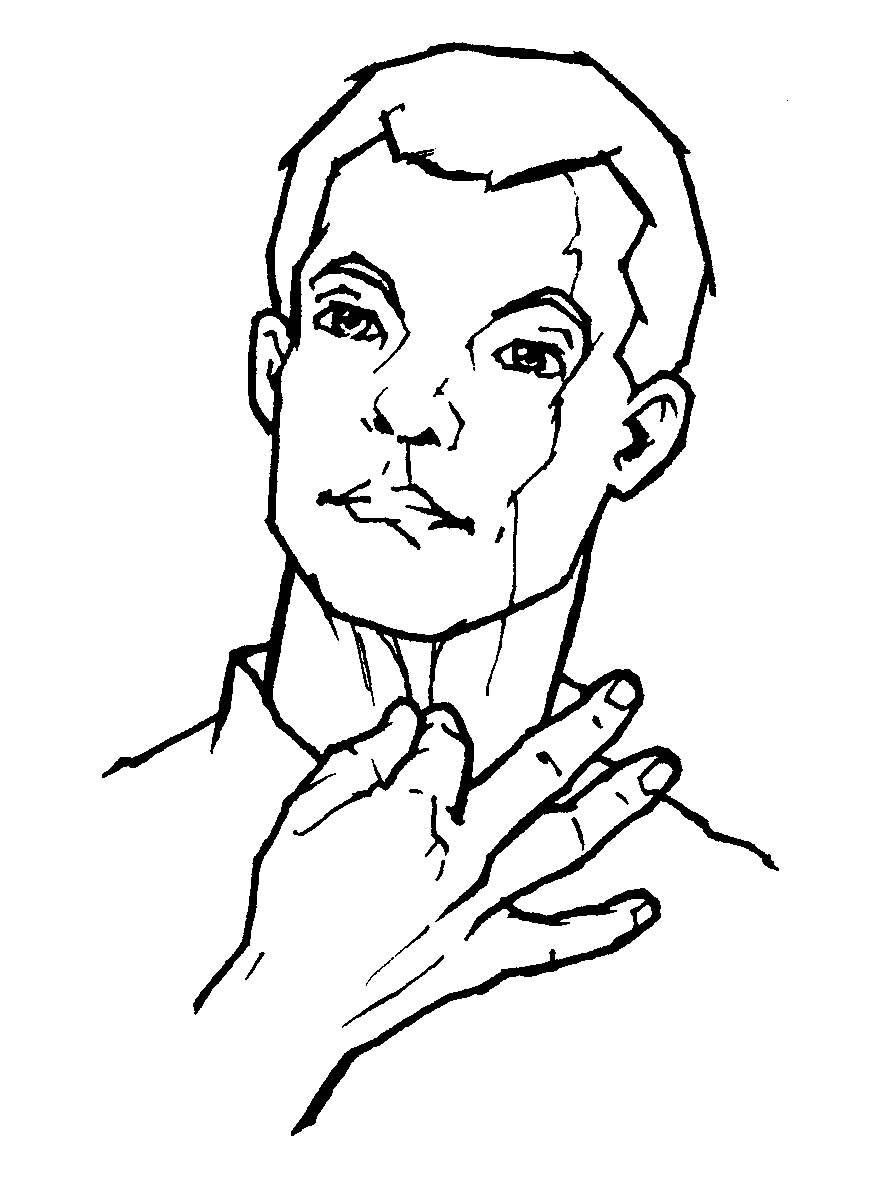CURIOUS: The
American Sign Language (ASL) sign for "curious"
CURIOUS: Use an "F" handshape. Place the tip of the thumb and index finger on your throat. Raise and lower the pinkie side of your hand a couple times while keeping the tip of the index and thumb in the same spot.

Note: This sign is "pronounced" (signed) several ways. Few people actually grab a hunk of skin on their neck. Most simply bring an "F" hand up near their throat for a brief moment with no "up and down movement" of the pinkie-side of the hand." If I were signing a story for a child about a "curious cat" who was always getting into trouble, I'd actually grab some skin and really do the up and down pivoting movement. But when I'm conversing with adults in a normal way I just bring the F hand up to my throat as if my throat were a balloon and I were holding a pin and I "pop" the balloon using a very smooth quick movement. I also notice that when I'm asking someone if they are curious I tend to use the pivoting movement, but if I'm just making a quick statement I don't pivot the hand as much.
Note:
While some websites or even teachers
might describe the sign curious as "pinching the skin on the neck as in pulling
the skin forward" -- in real life usage, we typically don't "pinch" or grab the
skin while signing curious. Doing so would be awkward and too much effort.
Mainly we:
1. Tap an F to the front/center of the neck once or twice.
Or...
2. Touch the index finger and thumb of an F handshape to the neck and pivot the
pinkie side of the hand up and down a couple times. (For example: up, down, up)
Actual contact with the neck is optional in both approaches.
Does that mean you'll never see someone pinching their neck to mean curious and
you won't see descriptions of "pinch" the neck or people teaching the pinch the
neck version?
I'm not saying that. You'll see lots of weird versions of lots of signs versions
in books / websites, classroom instructors, and occasional random signers that
is different from the "norm" we see in everyday signing. However, your goal is
to sign in a way that is efficient and representative of how signing is done in
the Deaf Community.
Notes: See: INTEREST
ANALYZE
INVESTIGATE
STRANGE
*
Want to help support ASL University? It's easy:
DONATE (Thanks!)
* Another way to help is to buy something from Dr. Bill's "Bookstore."
* Want even more ASL resources? Visit the "ASL Training Center!" (Subscription
Extension of ASLU)
* Also check out Dr. Bill's channel:
www.youtube.com/billvicars
You can learn American Sign Language (ASL) online at American Sign Language University ™
ASL resources by Lifeprint.com © Dr. William Vicars